South Africa’s National Orders
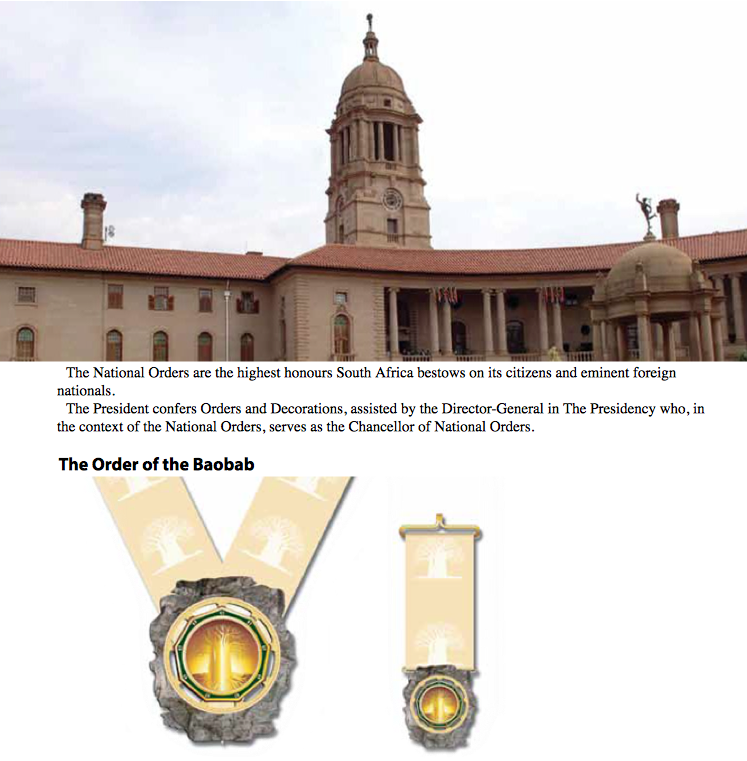
The Baobab, a tropical African tree, depicts endurance, wisdom, endowment and bounty. These are characteristics that the recipients of this Order should possess.
Various elements in the Order’s design symbolise longevity, community support, contribution, and prosperity.
The central motif of the Order is the image of the Boabab tree enclosed in a nine-sided polygon, which represents the nine provinces of our country as well as the many possible areas of possible contribution and service to the nation.
The Order of the Baobab is awarded to South African citizens for distinguished service in the fields of business and the economy; science, medicine and technological innovation; and community service.
The design has three elements: a neck badge (a gold, silver or bronze medallion on a neck band); a miniature (a miniature gold, silver or bronze medallion for wearing as a brooch or on the breast pocket); and a lapel rosette.
The Order is awarded in three classes: gold, silver or bronze.
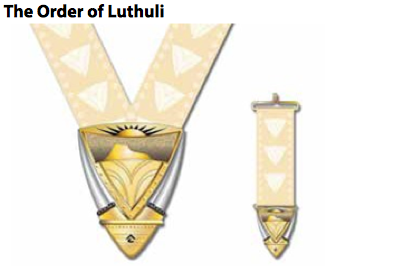
The Order is named after Chief Albert Luthuli whose leadership during the Defiance Campaign against the apartheid system won him the Nobel Peace Prize in 1960.
The central motif of the design of the Order is the triangular flintstone, which represents a basic survival tool used by our ancestors to skin animals, construct shelter and cut strips of skin to make clothes. It symbolises Chief Luthuli’s vision for all people to be empowered to participate fully in society. Below the flintstone is Isandlwana Hill – an abstract representation of our country’s national flag representing freedom and democracy. Two bull horns are on either side of the design, which signifies the empowerment and prosperity of African people. The leopard skin rings at the base of the horns represent the trademark headgear of Chief Luthuli.
The Order is awarded to South Africans who have made a meaningful contribution to the struggle for democracy, human rights, nation-building, justice and peace, and conflict resolution.
The Order of Luthuli is awarded in gold, silver or bronze.
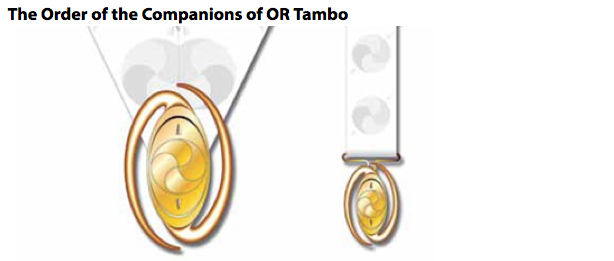
Struggle icon Oliver Tambo played a major role in the growth and development of the international movement of solidarity against racism and apartheid. Among other things, he established the first missions of the liberation movement in Egypt, Morocco, Ghana and London. This was a modest start to bring the friends of South Africa together throughout the world in a continuous and sustained mobilisation of the international community in support of a free and democratic South Africa.
The Order is awarded to heads of state and other dignitaries for promoting peace, cooperation and friendship towards South Africa.
In the design of the main badge of this Order, the watchful eye of the majola (mole snake) symbolises the active expression of solidarity and support for South Africa.
The Order of the Companions of OR Tambo is awarded in three classes: gold, silver and bronze. All these awards include four elements: a walking stick, a neck badge, a miniature and a lapel rosette.
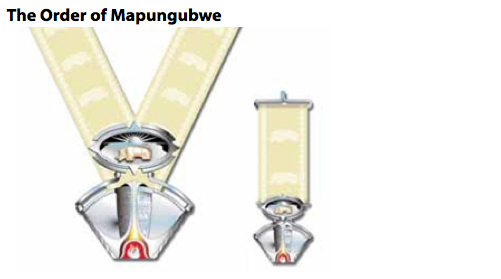
The Mapungubwe kingdom existed in the northern corner of our country a millennium ago. The Kingdom had a sophisticated state system and a developed agriculture sector. It also developed a mining and metallurgy industry. The kingdom traded with countries as far as China. During its time, it represented excellence of human thought and ingenuity.
The bottom segment of the design represents the skill and craft of smelting, smithing, pottery and ceramics. There is also a fire representing the furnace used to purify and temper metal and fire pottery. The furnace also evokes the life-sustaining properties of fire, used by humankind since the Iron Age to provide warmth and sustenance. The fire represents also the advancement of humankind. The overflowing urn at the centre symbolises abundance of wealth and excellence.
The majesty of the shape of the Mapungubwe sceptre and the delicately crafted Mapungubwe rhino reflect remarkable workmanship. Its overall message is that South Africa and its people can prosper, regardless of the conditions in which they find themselves.
The Order of Mapungubwe is awarded to South African citizens for excellence and exceptional achievement. It is awarded in gold, silver or bronze.
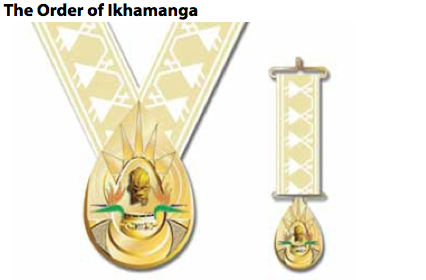
The ikhamanga, more commonly known as the strelitzia, crane or bird of paradise flower, is the central motif of the Order of Ikhamanga and symbolises the unique beauty of the achievements of South Africans in the creative fields of arts, culture, literature, music, journalism and sport.
The different design elements on the award e.g. one of the Lydenburg heads, concentric circles and two roads disappearing into the horizon, all highlight the creative and sports fields and represent exceptional achievement and success.
This Order is awarded in gold, silver or bronze.
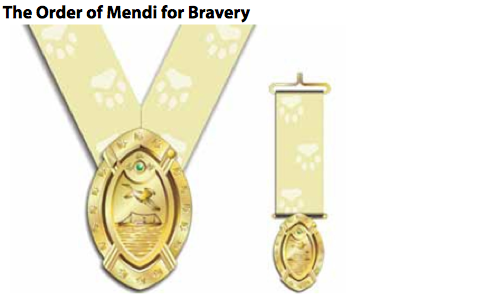
The Order has various design elements depicting bravery, courage and resilience.
On the shield is the ill-fated warship, the SS Mendi, which sank on 21 February 1917 with all its officers. On board were also 600 black South African volunteer soldiers on their way to France to assist in the Allied War effort during the First World War. Legend has it that these soldiers, together with their fellow white officers, sang as the vessel sank. Above the ship, flies a blue crane, which represents the souls of the drowned brave soldiers.
The green emerald, which lies in the centre, is the core from which three pointers emerge that represent the way ahead in rendering assistance to those in need during natural disasters and other extreme difficulties that take place around the globe.
In the background are a knobkierie and spear, which complement the shield as symbols of defence and honour. The edges of the holding shape are trimmed with the spoor of a lion, indicating border patrols, within and beyond our country, by dedicated and brave South Africans.
This Order is awarded to South African citizens who have performed extraordinary acts of bravery
The Order of the Mendi for Bravery is awarded in gold, silver or bronze.



 Facebook
Facebook Twitter
Twitter WhatsApp
WhatsApp